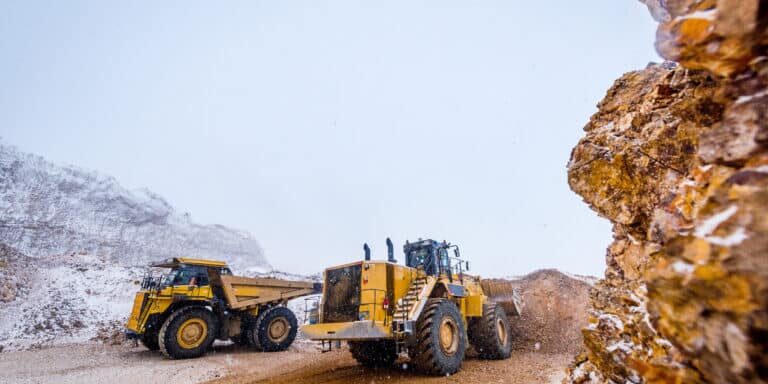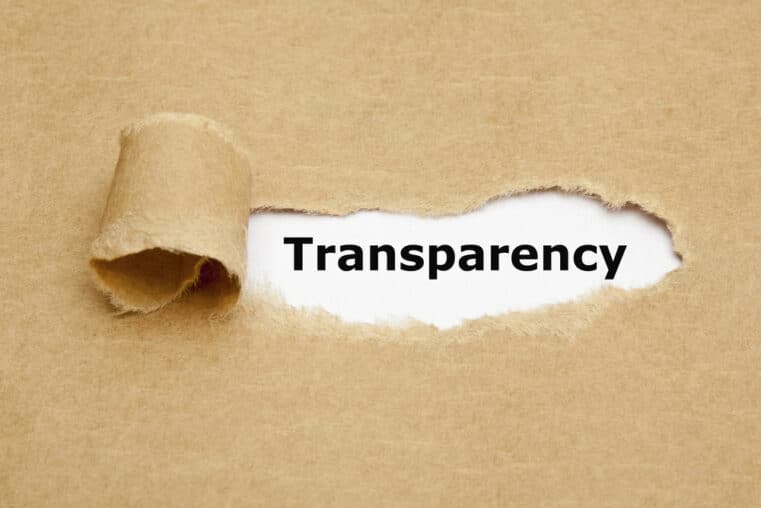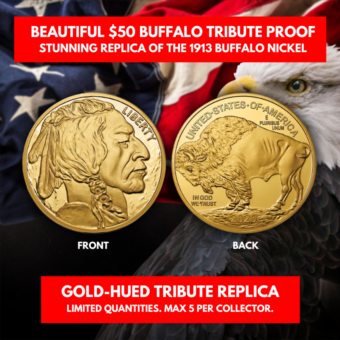
5 Gold Prospecting Tips: How to Find Gold Outside
During the California Gold Rush of 1848, approximately 300,000 people traveled to California from inside and outside of the United States, all hopeful that they would be the next to strike gold. In the past few centuries, hundreds of thousands of prospectors have scoured the USA for traces of this precious metal. Unfortunately, only a handful of the many people looking for gold ever hit the jackpot, as finding gold can be more difficult than it looks.
You might already know where gold is found on earth, but that doesn’t mean you’ll be able to find it. Prospecting for gold has been a popular challenge ever since the general population realized there was a chance of quick riches, but only a select handful have truly discovered a new and bountiful gold deposit. If you’re going to search for gold, it’s a good idea to be well prepared for failure.
In this article, we’ll explain exactly what it means to prospect for gold, and where you can start looking for your big payday. After you’ve learned all there is to know about finding gold in the outside world, we’ll share our 5 top tips for a more successful search. Gold is one of the earth’s most valuable resources, so to discover a large amount of it would be very fortunate indeed. If you want to increase your chances of finding this precious metal, don’t stop reading now.
What Is Gold Prospecting?
Gold prospecting, simply defined, is the act of searching for previously undiscovered gold deposits. There are numerous different techniques and technologies you can use to prospect for gold, but the methodology remains the same. Before we explain the different ways you can search for gold, you need to understand the two ways in which the metal is found in nature. The technique you use to search depends on the type of gold you’re searching for, so this first must be decided.
Hardrock gold deposits, found in large rock formations, are the most bountiful source of gold. These primary gold (or lode) deposits are often turned into large open-pit or deep underground mines. Most of the time, you need industrial machinery and serious resources to mine primary gold deposits. Lode gold is the most valuable type of gold deposit you can discover, but it’s not what most independent prospectors are looking for.
Secondary gold, called placer gold, is mined through a process called panning. This technique, which involved sifting the sediment from river beds to find small gold nuggets, is centuries old but has withstood the test of time. Prospectors today still pan for placer gold as it’s a low-cost option that can be done by anyone. Placer gold originates from primary gold; a process of erosion takes place over thousands of years to carry gold particles from rock formations to other locations.
Gold prospecting can be done using any of these techniques, from a huge industrial level right down to the small scale. Any person who searches for gold in nature is considered a gold prospector, even if they never find a single gram of precious metals. There are many techniques that we will share along with our tips on how to find gold, but first, let’s discover where you can find this precious metal outside. Once you know where to look, the next step is to get out there and find some gold!

The modern hard rock method of mining gold produces most of the world's gold today.
Where To Find Gold Outside
Most people who prospect are searching for placer gold. Primary gold deposits are considered much more valuable, especially as they are commonly found alongside other valuable veins containing silver or quartz. Large rock formations containing gold deposits are highly desirable to large mining corporations, but as an individual prospector, it’s unlikely you’ll have the resources to benefit from your discovery. Prospecting for placer gold, on the other hand, is still a highly popular activity, and one that can be lucrative if you know where to look.
Placer gold is found at a variety of secondary locations, but these are easy to predict if you understand how it is formed. You can find it almost anywhere that a larger lode deposit has been discovered, in quite a wide radius too. Gold is released from primary deposits through weathering, stream or river flow, or glacial action. In any case, water carries the gold from its point of origin in a downward direction until it eventually reaches a resting place. This can have happened thousands of years previous, so ancient river beds and lakes which have long dried up are a great place to look.
Gold can be found almost anywhere on earth and has been discovered in every continent except Antarctica. In the United States, the largest mother lodes were found in Nevada, Northern California, and Oregon. To this day, gold panning can be very successful in these states, in addition to New Mexico, Idaho, Arizona, Utah, Montana, North Carolina, and Alaska. The gold production industry in Canada is also still booming to this day. If you want to try your hand at gold prospecting in the US, one of these locations offers the best opportunities for success.
How To Find Gold: 5 Gold Prospecting Tips
Now that we’ve explained a little bit about what gold prospecting is, you should have a better idea of your chances. If you decide that searching for gold ore is worth a try, make the most of your opportunity by following our advice. We have a lot of tips to share about how you can improve your gold prospecting technique, throughout every step of the process. From the moment you decide to start looking, up until you’re holding solid gold in your hand, here are 5 tips you can use to make your experience better.
1. Learn About Local Geology
You need to know about all the different rocks and formations which are common to your mining area. You’re unlikely to come directly across a vein or lump of exposed gold, but it’s much easier to find the types of rock associated with gold. If you can figure out which rock formations commonly appear alongside gold in your area, it’s much easier to narrow down your search area. The three most common types of rock to find near gold are granite, schist, and gneiss. We’ll explain more on the specific clues which spell gold later; for now, let’s dive deeper into geology.
If you’ve been gold prospecting in the past, you might have heard of contact zones. Also called dykes or intrusions, contact zones are where two major rock masses (each of a different type) have come together. This meeting will have happened millions of years ago as a result of tectonic plate movement, but the conditions contact zones create are perfect for the formation of gold. As the two masses collide, they would rapidly heat to high temperatures and then recool, all under incredible pressure. This led to the formation of fissures, through which gold could be pushed from deep underground up to the surface.
This gold would have previously been unreachable to miners, without tunneling down deep underground. Instead, veins of precious metal are accessible from the surface, and prospectors can find them without digging. So, learning to spot contact zones, especially ones featuring granite, schist, gneiss, or another local gold-rich rock, is a fantastic way to find gold. By improving your knowledge of all geology surrounding gold, you’ll become a much better prospector.
You might have realized that this advice is more useful for finding primary gold, not the placer gold you’re seeking. However, secondary gold is never found far from its origin, so by discovering likely primary gold deposits such as contact zones, you’ll know that you’re closer to a potential placer mining spot. Research into rock formations isn’t the only reading you need to do before gold prospecting; continue to our next tip to find out how you can use out-of-date gold discoveries to your advantage.
2. Research Previous Gold Discoveries
Since the dawn of early civilizations, people have always held gold. This periodic element is valuable to us for so many reasons, meaning you won’t be the first to try prospecting for gold in your backyard. As one of the most expensive natural resources on the planet, gold has been a conduit for wealth and power for generations. Unfortunately for today’s gold prospectors, this fact means you’re unlikely to look for gold anywhere that hasn’t been searched before.
Rather than being dissuaded by this realization, you can use it to your advantage. Especially in the United States, it’s easy to find records of old mines and exhausted gold deposits. This information can’t tell you exactly where to find gold, but there are a lot of clues to be extracted if you know where to look. Much of the work that goes into gold prospecting comes before you ever step outside. Thorough research and a methodical plan are the best tools with which to approach your gold prospecting adventure.
Considering this information, we can easily conclude that finding a brand new mother lode of gold ore is unlikely. Instead of looking for the next huge gold mine, it’s actually a good idea to visit previously prosperous mining areas. If a geological area was particularly rich in gold in the past, chances are some is still left behind. Remember that you’ll have to look harder than every prospector before you, in order to spot what they missed. However, this remains one of the most reliable ways to find placer gold, as hidden mining spots are still discovered all the time.
On an important note, not all previous mining locations make a good gold prospecting destination. Many of the country's largest placer deposits have been thoroughly worked more than once. For example, huge dredging operations were in place in Colorado in the 1950s. Floating machines called dredges filtered hundreds of tons of sediment per day in lakes where gold was found. Because areas like this were so thoroughly covered by mining operations, it’s unlikely that the independent prospector will find anything of value. When you’re deciding where to go prospecting for gold, choose a known gold-rich area that hasn’t been over mined.
3. Pick The Right Tools For The Job
There are lots of products which claim to make your job searching for gold easier. One of the most famous examples is the metal detector, seen in countless movies as a miraculous device that will lead you directly to gold. Using a metal detector can make finding gold much easier, especially as this technology can discover gold which old-time miners had no access to. Modern sluice boxes can capture much smaller flakes of gold than was previously thought possible, so modern gold prospectors have many advantages.
However, many of the technological advances which make gold prospecting easier come with a significant price tag. Metal detectors and drywashers can cost much more than the value of the gold they will earn you, but having the most expensive tools isn’t always necessary. All you need is a set of gold pans with varying grades of mesh, so you can slowly separate out gold nuggets and flakes. Metal detecting makes finding gold much easier, but you can find and mine gold with only basic tools and well-researched knowledge.

The most popular methods of obtaining gold during the gold rush were panning and slicing before being weighed.
4. Watch Out For Iron
There are certain geological features you can look out for, which are often found alongside gold. Black sand is one of the most common substances found alongside gold. It gets its color from iron-rich materials such as hematite and magnetite. Black sands occur in many locations and don’t always mean you can start gold mining nearby. However, in previous gold recovery efforts, black sand has been found frequently.
Millions of years ago, when gold was pushing its way up through the crevices of the earth, another element was doing the same. Iron is found in abundant amounts in the same locations of gold because they were formed around a similar time. As well as black sands, dark and red soils often have high iron content. In fact, any soil of a bright color could be a sign of iron minerals in the area, so this is an ideal place to start prospecting.
In addition to iron, quartz is also found frequently alongside gold deposits. This mineral often runs in the same vein as the yellow metal, so pay attention to any quartz veins in your prospecting area. The clean, white quartz which is generally found most attractive is actually not what you’re looking for in this situation. Instead, watch out for “dirty” quartz, which is actually stained by iron. We know that iron is a major indicator of gold deposits, so these two minerals together could be an indication of good mining opportunities.
5. Look In Low Places
We know that placer gold is carried down from primary deposits by water. This can be a river still running, or a streambed long dried up. A good gold prospector can recognize the flow of water, and use this information to figure out where gold is likely to have been deposited. The other fact you need to be aware of to make the best-educated guess is that gold is incredibly heavy. This element is much denser than silver and is an astounding 19 times heavier than the equivalent volume of water.
Because gold is so heavy, nuggets and flakes can only be picked up by rapidly moving water. As soon as an obstacle slows the current, the heavy metal drops and settles at the bottom. You’ll rarely find gold just sitting in the streambed; years of dirt, stones, and sediment will layer on top, so be prepared for some digging. The obstacles that slow water enough for gold to deposit are often simply bends in the stream. Large boulders near a twist in the river can often collect plenty of fine gold and are a favorite spot for panners. When examining the shape of a stream, note the inside bends, rather than those on the outside. The inner corner is where gold accumulates, whereas nuggets in other areas will wash away.
How To Find Gold
If it’s your first time out prospecting, don’t expect to return with ounces of gold. Panning for gold is a hobby as well as a way to make money, it’s so exciting to discover natural riches no matter the size. All you need to do is avoid getting caught out by fool’s gold, or pyrite, which can disappoint a lot of first-time miners. Learning to pan for gold is a valuable skill, and the more you research the topic, the easier you’ll find it to recognize and recover gold. The only way to truly improve your gold panning technique is through experience, so get out there as often as possible. Sure, fancy equipment and expensive technology can make gold mining easier, but you can be just as successful if you dedicate yourself to thorough research.











